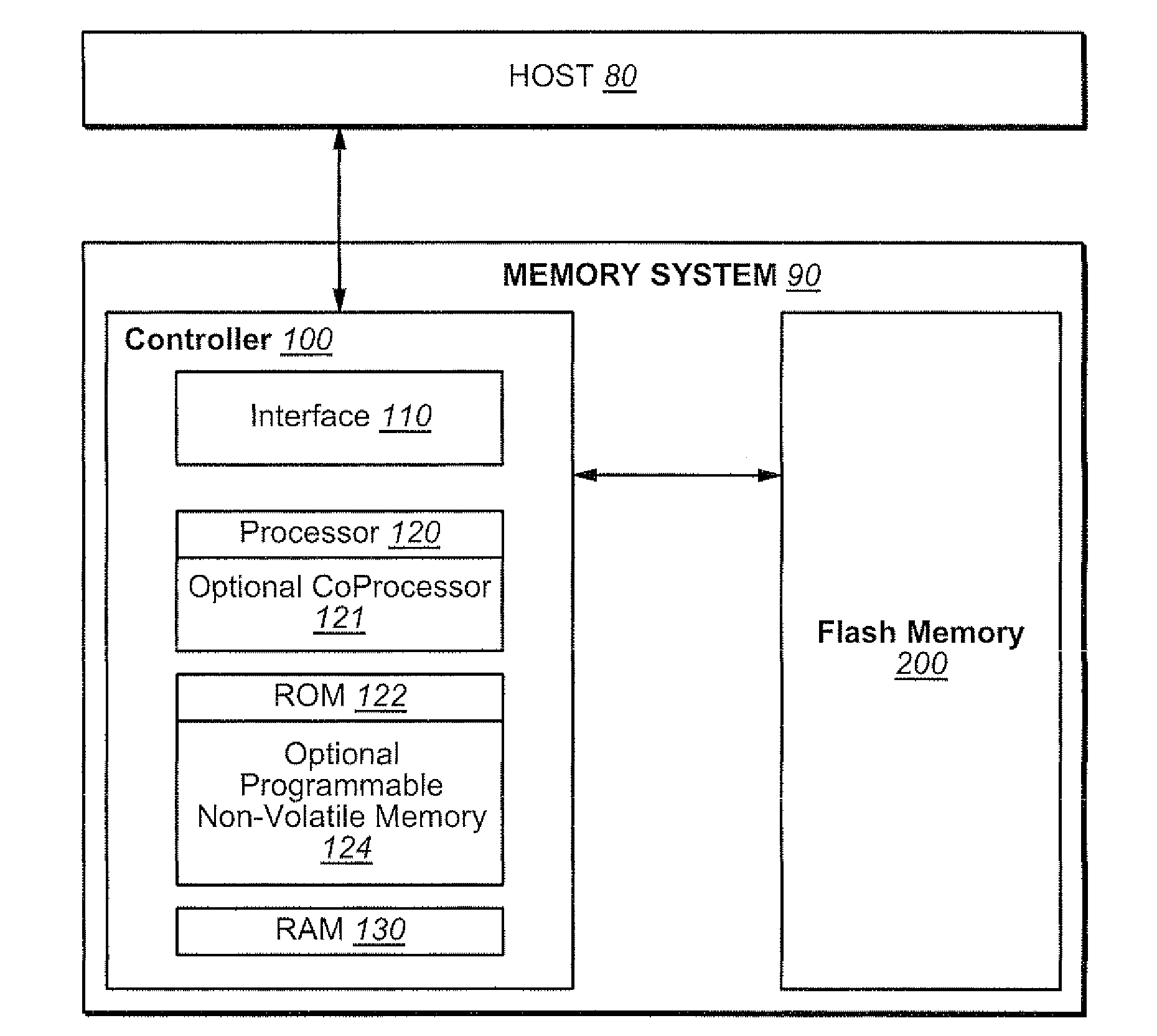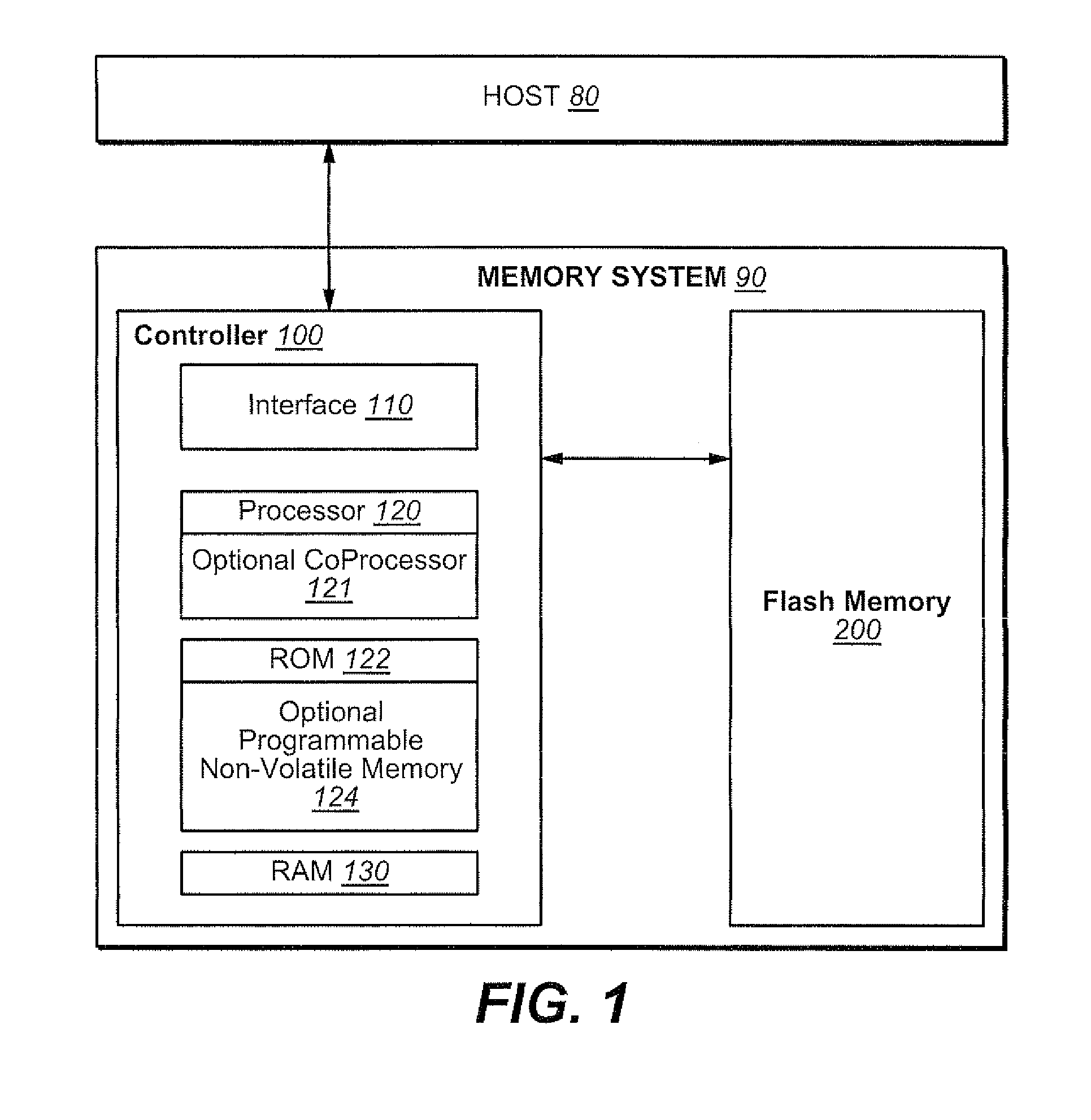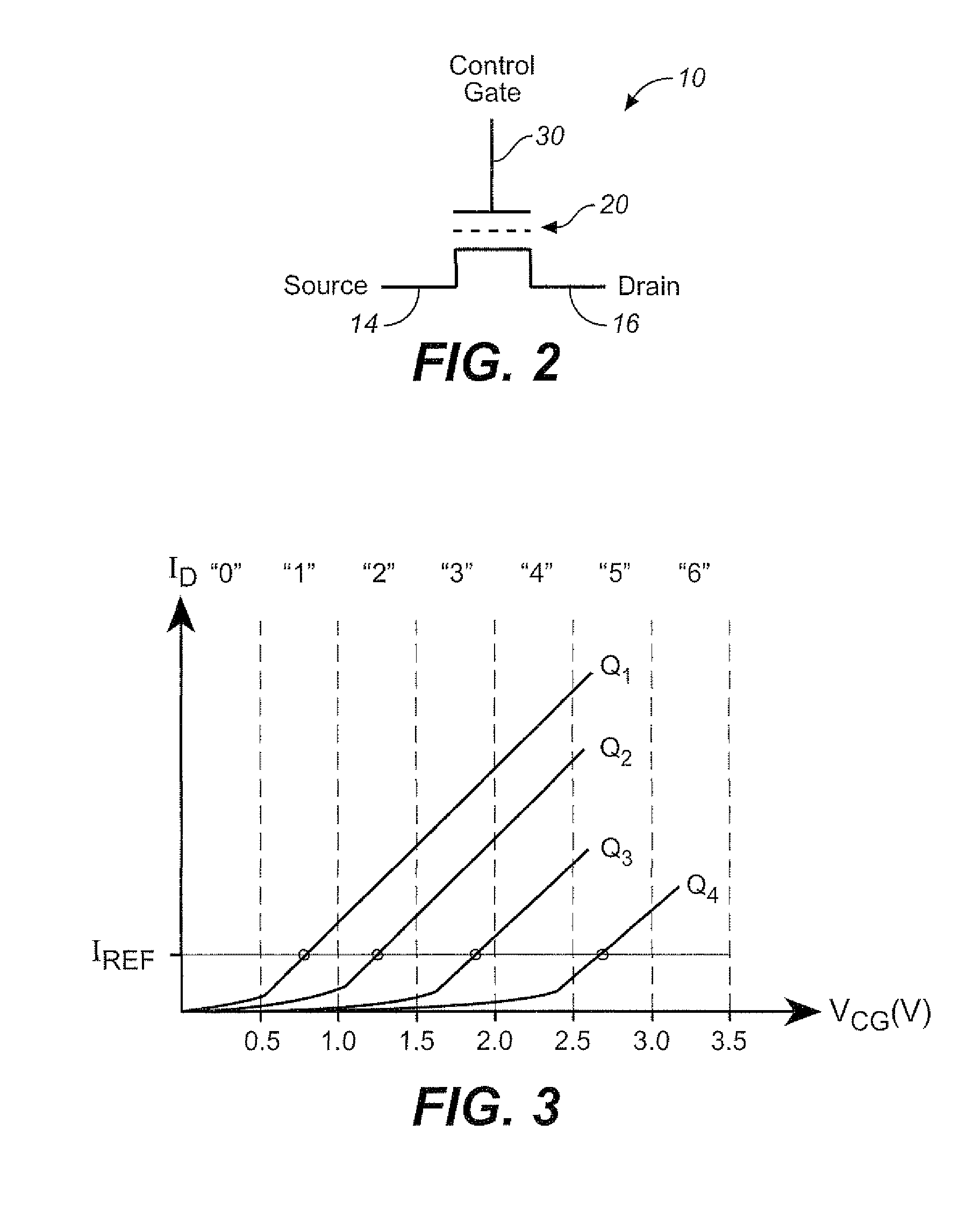Balanced Performance for On-Chip Folding of Non-Volatile Memories
a non-volatile memory and memory chip technology, applied in the field of reprogrammable non-volatile memory system operation, can solve the problems of unsuitable mobile and handheld environment, bulky disk drives, and easy mechanical failure, and achieve uniform performance
- Summary
- Abstract
- Description
- Claims
- Application Information
AI Technical Summary
Benefits of technology
Problems solved by technology
Method used
Image
Examples
Embodiment Construction
Memory System
[0060]FIG. 1 to FIG. 7 provide example memory systems in which the various aspects of the present invention may be implemented or illustrated.
[0061]FIG. 8 to FIG. 13 illustrate one memory and block architecture for implementing the various aspects of the present invention.
[0062]FIG. 1 illustrates schematically the main hardware components of a memory system suitable for implementing the present invention. The memory system 90 typically operates with a host 80 through a host interface. The memory system is typically in the form of a memory card or an embedded memory system. The memory system 90 includes a memory 200 whose operations are controlled by a controller 100. The memory 200 comprises of one or more array of non-volatile memory cells distributed over one or more integrated circuit chip. The controller 100 includes an interface 110, a processor 120, an optional coprocessor 121, ROM 122 (read-only-memory), RAM 130 (random access memory) and optionally programmable ...
PUM
 Login to View More
Login to View More Abstract
Description
Claims
Application Information
 Login to View More
Login to View More - R&D
- Intellectual Property
- Life Sciences
- Materials
- Tech Scout
- Unparalleled Data Quality
- Higher Quality Content
- 60% Fewer Hallucinations
Browse by: Latest US Patents, China's latest patents, Technical Efficacy Thesaurus, Application Domain, Technology Topic, Popular Technical Reports.
© 2025 PatSnap. All rights reserved.Legal|Privacy policy|Modern Slavery Act Transparency Statement|Sitemap|About US| Contact US: help@patsnap.com



